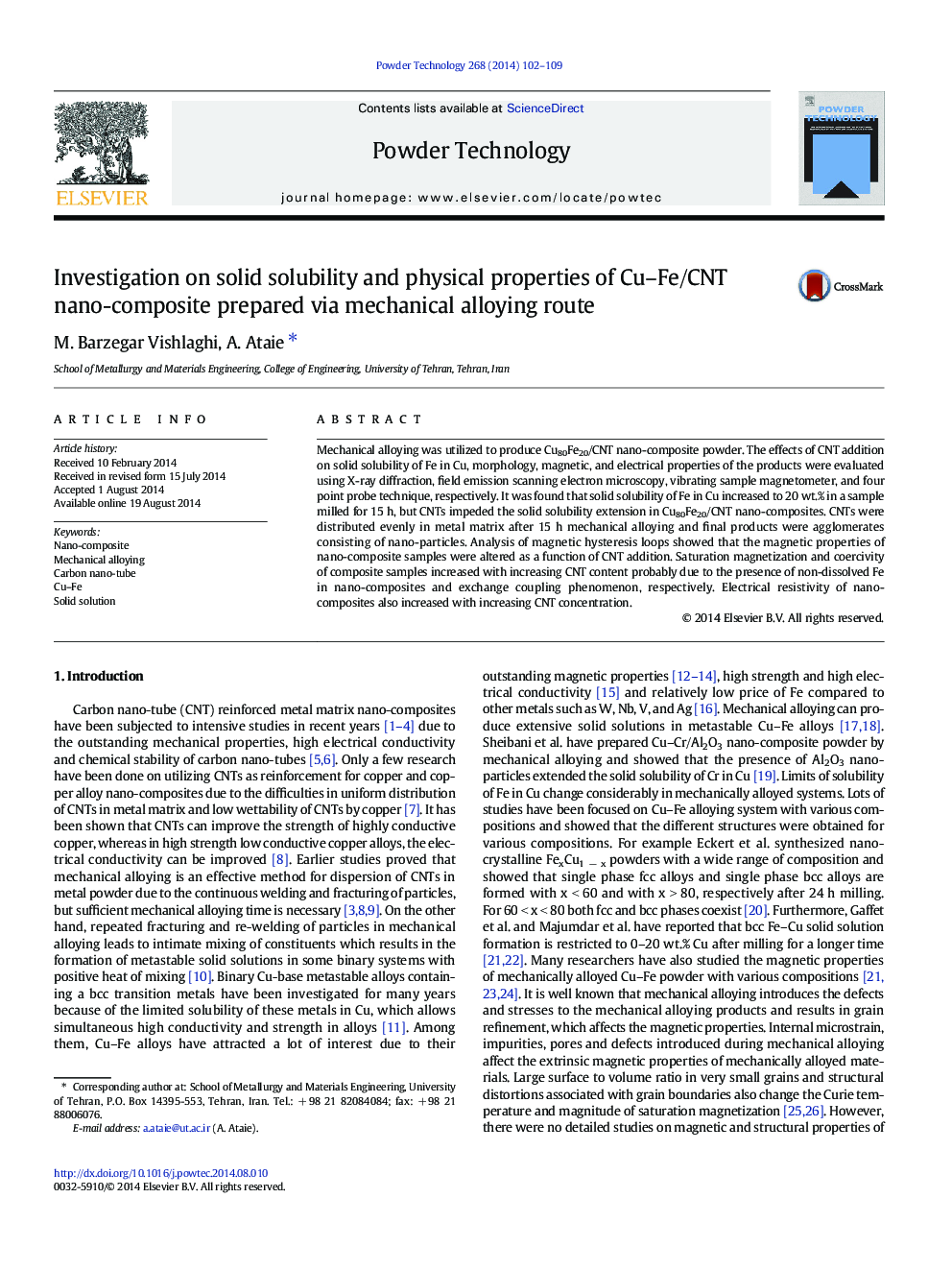| Article ID | Journal | Published Year | Pages | File Type |
|---|---|---|---|---|
| 235939 | Powder Technology | 2014 | 8 Pages |
•Cu–Fe/CNT nanocomposites were synthesized by mechanical alloying.•CNTs impeded the non-equilibrium solid solubility of Fe into Cu.•Coercivity and saturation magnetization increased by increasing CNT content.•Electrical resistivity increased on increasing CNT content.
Mechanical alloying was utilized to produce Cu80Fe20/CNT nano-composite powder. The effects of CNT addition on solid solubility of Fe in Cu, morphology, magnetic, and electrical properties of the products were evaluated using X-ray diffraction, field emission scanning electron microscopy, vibrating sample magnetometer, and four point probe technique, respectively. It was found that solid solubility of Fe in Cu increased to 20 wt.% in a sample milled for 15 h, but CNTs impeded the solid solubility extension in Cu80Fe20/CNT nano-composites. CNTs were distributed evenly in metal matrix after 15 h mechanical alloying and final products were agglomerates consisting of nano-particles. Analysis of magnetic hysteresis loops showed that the magnetic properties of nano-composite samples were altered as a function of CNT addition. Saturation magnetization and coercivity of composite samples increased with increasing CNT content probably due to the presence of non-dissolved Fe in nano-composites and exchange coupling phenomenon, respectively. Electrical resistivity of nano-composites also increased with increasing CNT concentration.
Graphical abstractFigure optionsDownload full-size imageDownload as PowerPoint slide
